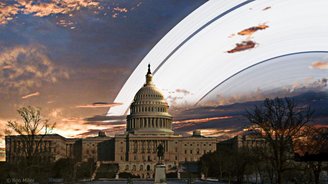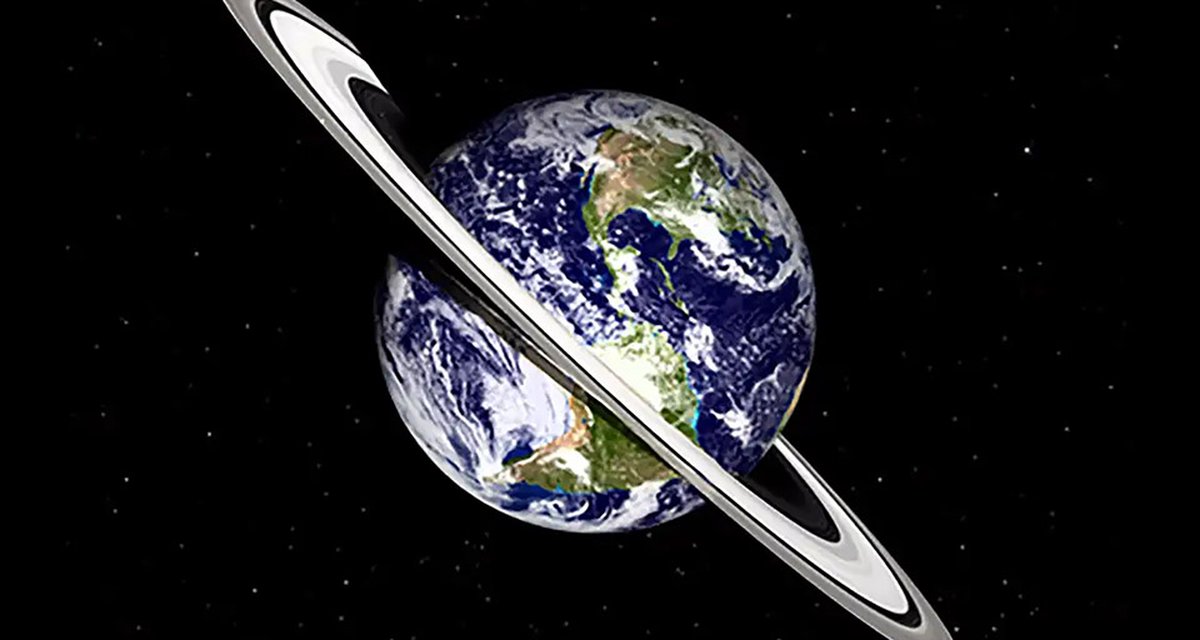Starting in March next year, Saturn’s rings will be invisible to us Earthlings. Although they remain in the same place as magnificently as ever, they will not be visible due to the alignment of the gas giant’s rotation axis with the Earth’s orbit. What if we had our own ring system with the same proportions as Saturn’s?
This crazy but extremely appealing idea became an obsession for artist Ron Miller, one of the world’s greatest illustrators and who specializes in astronomy, astronautics and science fiction books. After working as an art director at the Albert Einstein Planetarium in the USA for many years, he worked as a freelancer and created a series called Imaginary Lands, in which he portrayed our planet with different scenarios.
Similar to Saturn’s rings, the hypothetical rings of Earth created by Miller show one key difference from the sixth planet in the Solar System: There would be no ice on our rings. Since the Earth is much closer to the Sun, radiation from our star will certainly melt any icy material in our orbit.
What would Earth look like with “Saturn’s rings”?
If we had rings around our planet, they would probably be aligned around the equator because as the Earth rotates, it bulges out more in place, creating a “hub” of sorts.
People living at this continental latitude, such as the residents of Quito, will experience the same problem we will have with Saturn in 2025: Observe only the edge of the rings, like a thin slice of light in the night sky. A small number of inhabitants of the Arctic Circle would see the rings as a large semicircle on the horizon.
In the planet’s most temperate latitudes, such as Europe, Asia, Africa, northern North America, and southern South America, the rings would appear like a giant arc from one end of the sky to the other. Bright, neither rising nor setting, they appear in the same place every day, including at night.
Aren’t rock rings visible dark from Earth?
We know that Saturn’s rings are composed mostly of water ice particles that perfectly reflect sunlight. We might think that rings composed entirely of rock would appear dark. No, Caleb Scharf, director of astrobiology at Columbia University in New York, tells Live Science.
Comparing hypothetical orbital bands to the Moon, itself the result of merging rings in Earth’s distant past, Scharf reminds us that lunar rock is mostly gray and reflects only 12% of sunlight. Even if, The full moon “seems very bright because there is so much light falling on it and it is so close to us.”explains.
Given that average solar radiation in the upper atmosphere is about 1,300 watts per square meter, Scharf says: “If the rings reflect at least 10% of that, we’re talking about each square meter reflecting as much light as is produced by a 130-watt bulb.”
Could Earth’s Rings Be Dangerous to Air Travel?

Theoretically, the rocky rings would not be dangerous either to aircraft or to Earth’s inhabitants. According to the University Corporation for Atmospheric Research (UCAR), The closest the rings can be is above the atmospheric layer known as the thermosphere, at an altitude of 1000 km.. For this reason, commercial aircraft flying a maximum of 11 km will not be able to pass even near the rings.
As for the danger of these rocks falling on our heads, it’s worth remembering that atmospheric drag, a force that opposes the motion of any object through the atmosphere, will eventually burn any matter that gets too far down, as with shooting stars.
Did you like the content? So share the article on your social networks and with your friends who like these topics.
Source: Tec Mundo
I’m Blaine Morgan, an experienced journalist and writer with over 8 years of experience in the tech industry. My expertise lies in writing about technology news and trends, covering everything from cutting-edge gadgets to emerging software developments. I’ve written for several leading publications including Gadget Onus where I am an author.













